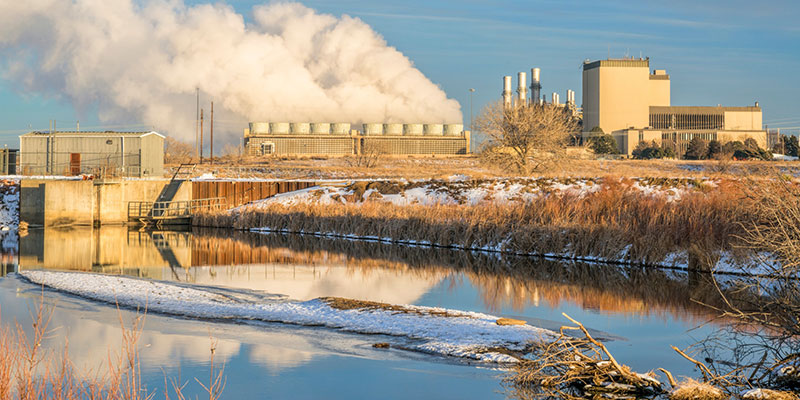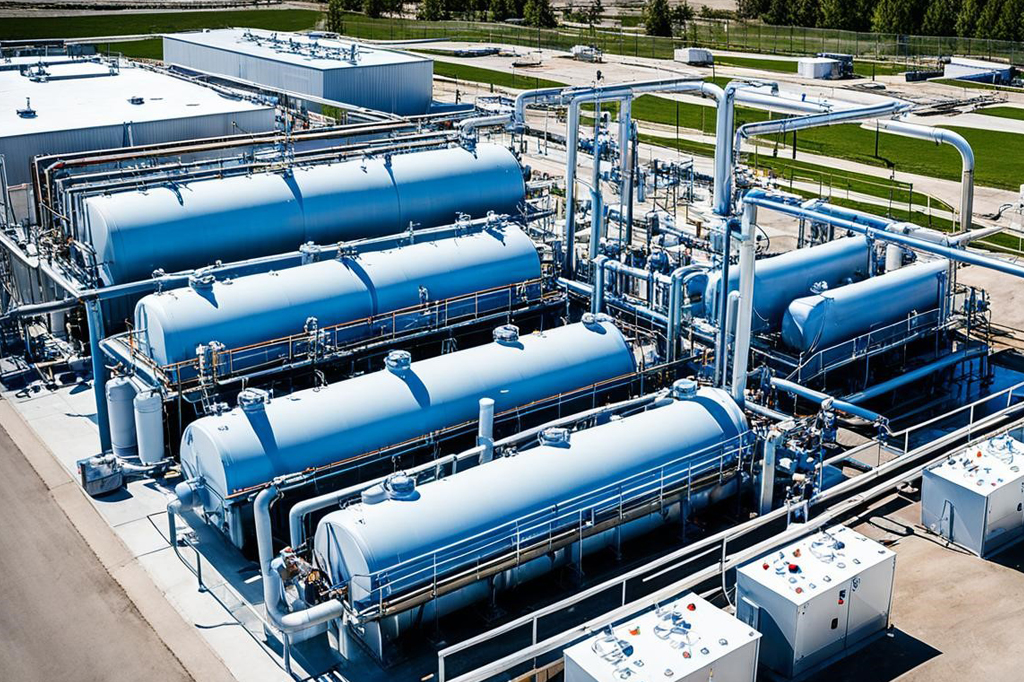Industrial Waste Water Treatment-- Shield the Setting with Specialist Water Treatment Providers
Industrial Waste Water Treatment-- Shield the Setting with Specialist Water Treatment Providers
Blog Article
Secret Techniques in Hazardous Waste Water Therapy Processes
The treatment of commercial wastewater is an important facet of environmental management, entailing a range of strategies designed to mitigate the impact of impurities. Innovations in innovations such as membrane layer filtration and progressed oxidation procedures provide cutting-edge remedies for improving therapy efficacy.
Physical Therapy Techniques
How properly can physical treatment methods deal with the intricacies of commercial wastewater? Physical treatment approaches play a crucial role in the initial phases of wastewater management, focusing mainly on the removal of solids and huge particulates. Techniques such as flotation protection, sedimentation, and filtering are essential for lowering the concentration of put on hold solids, thus enhancing the performance of succeeding treatment processes.
Sedimentation entails the gravitational settling of solids, allowing for the splitting up of much heavier materials from the wastewater. This technique is specifically effective in clarifying water prior to chemical or organic treatments.
In addition, flotation protection methods, which make use of air bubbles to raise put on hold solids to the surface area for removal, are reliable in dealing with wastewater with high focus of fats, oils, and oils. In general, physical treatment approaches serve as a crucial primary step in the detailed administration of industrial wastewater, making sure that the lots on succeeding therapy phases is decreased and improving total therapy efficiency.
Chemical Therapy Strategies
While physical therapy approaches lay the foundation for effective wastewater management, chemical therapy strategies are essential for addressing the extra intricate pollutants often located in commercial effluents. These approaches utilize different chemical agents to speed up, counteract, or oxidize hazardous materials, ensuring an extra comprehensive elimination of toxins.
One common technique is coagulation and flocculation, where chemical coagulants such as light weight aluminum sulfate or ferric chloride are contributed to advertise the gathering of put on hold particles. This process boosts solid-liquid splitting up, reducing turbidity and improving water top quality. Furthermore, neutralization processes are used to change the pH of wastewater, utilizing bases or acids to counteract acidic or alkaline streams, specifically.
Oxidation-reduction reactions play a critical role in derogatory natural impurities and virus. Chemical oxidants like ozone, chlorine, or hydrogen peroxide are utilized to damage down intricate natural substances, making them less hazardous or extra eco-friendly. Advanced oxidation processes (AOPs) incorporate multiple oxidation techniques to enhance pollutant elimination performance.
Biological Therapy Processes
The performance of wastewater treatment is significantly improved by organic therapy processes, which harness the all-natural metabolic tasks of bacteria to break down raw material and get rid of pollutants. Industrial Waste Water Treatment. These procedures largely entail anaerobic and aerobic food digestion, each customized for certain sorts of wastewater
Aerobic therapy processes make use of oxygen to sustain microbial growth, promoting the failure of organic pollutants right into carbon dioxide and water. Common techniques include turned on sludge systems, where aeration tanks facilitate the mixing of wastewater with bacteria, and trickling filters, which encourage biofilm development on media surface areas.
Alternatively, anaerobic therapy processes occur in the absence of oxygen, utilizing anaerobic bacteria to decompose natural matter, resulting in biogas production, a sustainable energy resource. Anaerobic digesters are commonly used in industrial setups for this purpose, properly lowering the quantity of sludge while generating important biogas.
The choice of a biological therapy approach depends on wastewater features, treatment goals, and regulatory requirements. The combination of biological procedures in wastewater therapy not just enhances toxin elimination performance yet also promotes sustainability by reducing chemical usage and sustaining source healing.
Advanced Oxidation Processes

Usual AOP methods include Fenton's reagent, photocatalysis, and ozonation. Fenton's reagent, a mix of hydrogen peroxide and ferrous iron, catalyzes the development of hydroxyl radicals, making it reliable for dealing with wastewater including phenolic substances and various other stubborn materials.
AOPs use a number of advantages, consisting of minimized sludge manufacturing and the capacity to deal with wastewater with high concentrations of natural contaminants. However, the implementation of AOPs needs cautious factor to consider of functional criteria and cost-effectiveness, ensuring that these sophisticated methods are properly incorporated into existing wastewater treatment systems.
Membrane Layer Purification Technologies

Microfiltration is effective for removing suspended microorganisms and solids, while ultrafiltration targets smaller organic molecules and viruses. Nanofiltration connects the space in between ultrafiltration and turn around osmosis, successfully getting rid of divalent ions and natural compounds. Reverse osmosis supplies the highest degree of filtration, utilized mainly for desalination and getting rid of mono-valent ions.
Membrane modern technologies provide many benefits, consisting of reduced energy usage compared to standard therapy techniques, modular style for scalability, and the capacity for water healing and reuse. Nevertheless, difficulties such as membrane fouling and the need he has a good point for regular maintenance must be resolved to make certain system efficiency. On the whole, membrane layer filtering innovations represent a vital part of modern industrial wastewater therapy approaches, advertising sustainability and resource conservation in water monitoring.
Verdict
To conclude, industrial wastewater treatment employs a varied range of techniques, consisting of physical, chemical, biological, and advanced techniques. Each method plays an important role in properly resolving numerous pollutants, enhancing water quality, and advertising source sustainability. The integration of these strategies promotes a detailed treatment method, making certain that commercial effluents meet regulatory criteria while reducing environmental effect. Proceeded advancements in these methodologies will certainly further improve the performance and performance of wastewater treatment procedures in industrial settings.
The treatment of industrial wastewater is a vital facet of ecological management, including an array of strategies developed to alleviate the influence of impurities.How successfully can physical therapy methods deal with the complexities of commercial wastewater?Advanced oxidation procedures (AOPs) represent an advanced technique in check my blog commercial wastewater therapy, designed to efficiently weaken organic pollutants that are usually resistant to conventional treatment methods (Industrial Waste Water Treatment).In final thought, industrial wastewater treatment employs a diverse range of methods, including physical, chemical, biological, and advanced methods. Continued advancements in these approaches will even more improve the effectiveness and efficiency of wastewater treatment processes in industrial setups
Report this page